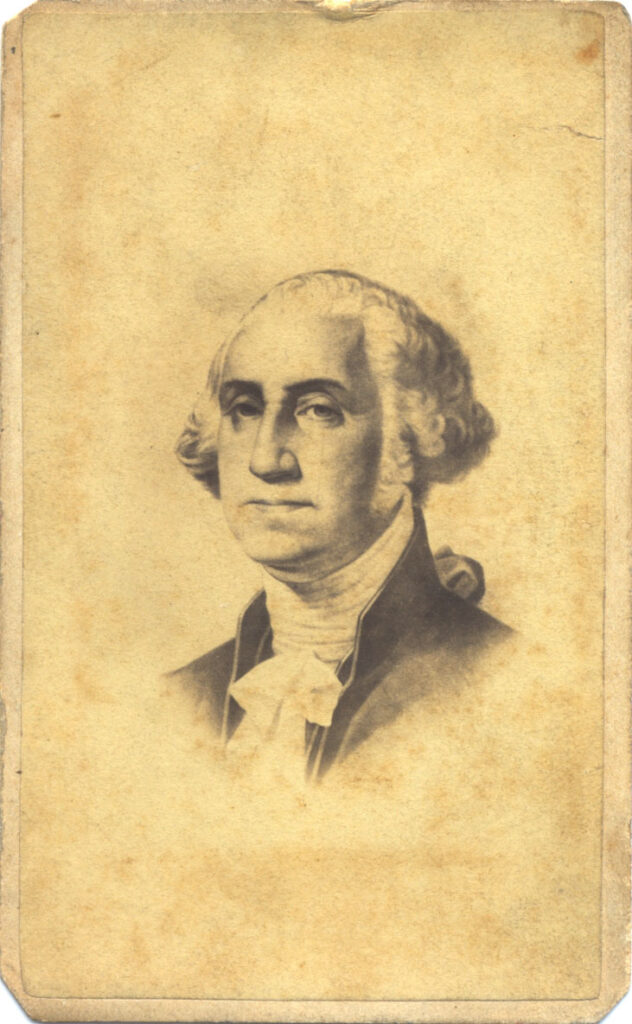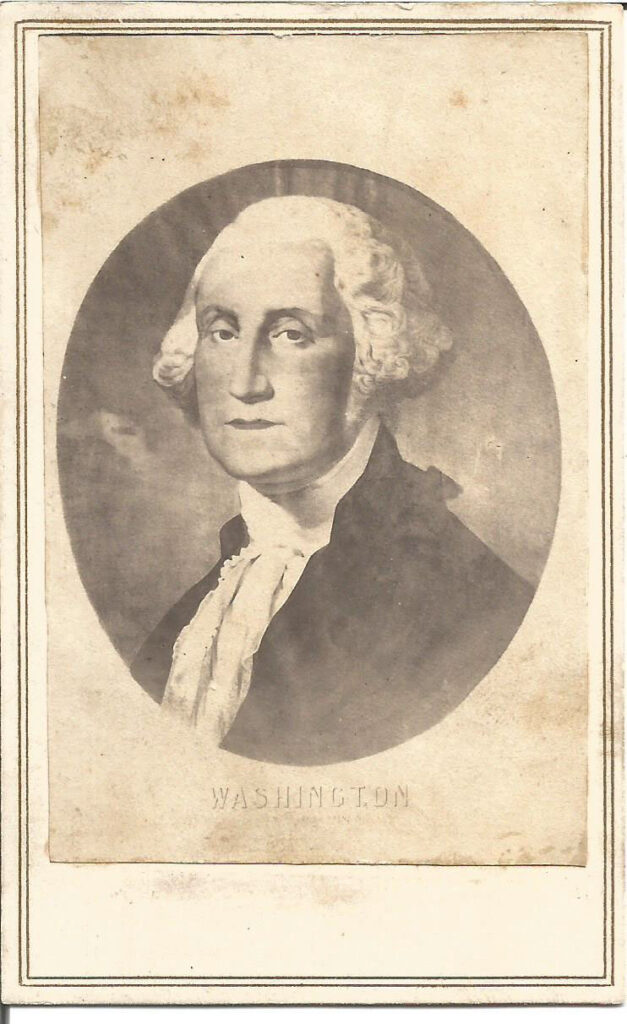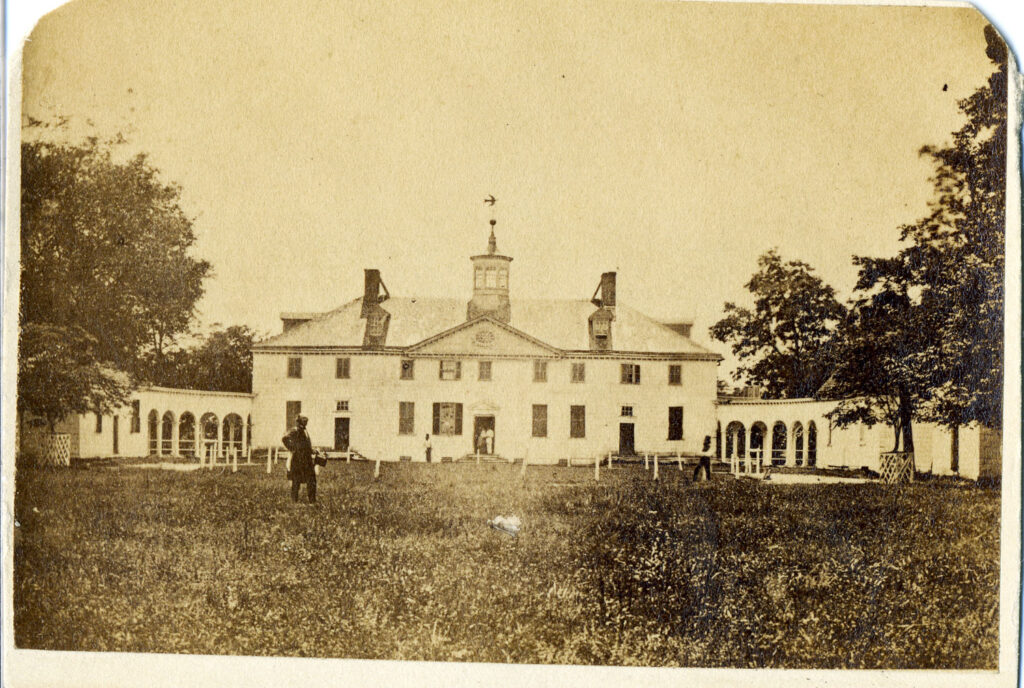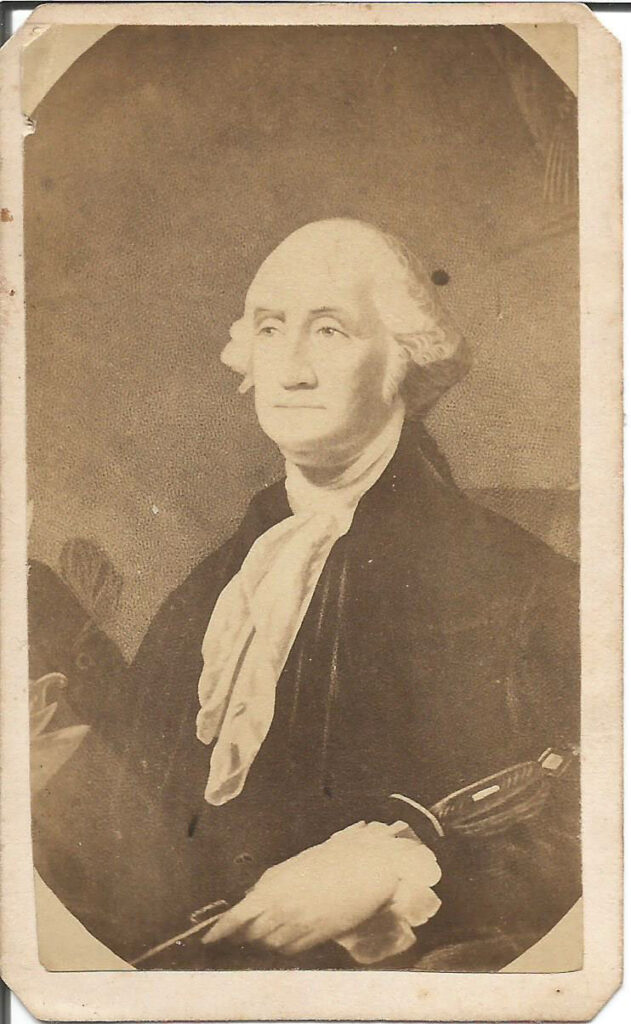Section #2 - A new Constitution is adopted and government operations start up
Chapter 12: George Washington’s First Term
December 1788- January 1789
The Election Of 1788

In December 1788, the United States is ready to hold its first elections under the new Constitution. Since each state sets its own time, the actual voting runs from December 15 to January 10, 1779.
All states select members of Congress, but three (New York, North Carolina and Rhode Island) do not participate in the presidential race. Of the ten that do, popular voting occurs in only six: Massachusetts, Pennsylvania, Virginia, Delaware, Maryland and New Jersey.
The right to vote for president is limited to men with property, with rules varying by state. The resulting popular vote count across the six states is only 43,782, or 1.3% of the nation’s total population.
Despite pleas to avoid partisan politics from the Independent candidate, George Washington, divisions between Federalist and Anti-Federalist are evident immediately.
Some Partisan Tendencies In The 1788P Election
| Anti-Federalists | Federalists |
| Fear federal intrusion on states | Favor a strong central authority |
| Agricultural economy | Economy is diversifying |
| Protective of slavery | Not dependent on slavery |
| Minimize federal costs and taxes | Active funding and support of business |
| More prevalent in South | More prevalent in North |
As expected, Washington is easily elected chosen as the nation’s first President. He receives almost 90% of all the popular votes cast, and is listed on all 69 of the “elector ballots.”
According to the Constitution, all “electors” name two choices for President, including one not from their own state – with whomever receives the second most votes becoming Vice President. This honor goes to John Adams by a wide margin.
Results Of The 1788 Presidential Election
| Candidates | State | Party | Pop Vote | Tot EV | South | Border | North |
| George Washington | Virginia | Independent | 39,624 | 69 | 22 | 9 | 38 |
| John Adams | Mass | Federalist | 34 | ||||
| John Jay | New York | Federalist | 9 | ||||
| Robert Harrison | Maryland | Federalist | 6 | ||||
| John Rutledge | S Carolina | Federalist | 6 | ||||
| John Hancock | Mass | Federalist | 4 | ||||
| George Clinton | New York | Anti Federalist | 3 | ||||
| All-Others (5) | 4,158 | 7 | |||||
| Total | 43,782 | 138 | |||||
| Needed To Win | 35 |
“Pro-Administration” candidates win the majority of seats in the first House of Representatives by a margin of 37 to 28, – with sizable wins in the North offsetting losses in the Southern and Border states.
House Of Representatives Election Of 1788
| South | # Seats | Pro-Admin | Anti-Admin |
| Virginia | 10 | 3 | 7 |
| North Carolina | 5 | 2 | 3 |
| South Carolina | 5 | 2 | 3 |
| Georgia | 3 | 0 | 3 |
| South | 23 | 7 | 16 |
| Delaware | 1 | 1 | 0 |
| Maryland | 6 | 2 | 4 |
| Border | 7 | 3 | 4 |
| New Hampshire | 3 | 2 | 1 |
| Massachusetts | 8 | 6 | 2 |
| Rhode Island | 1 | 1 | 0 |
| Connecticut | 5 | 5 | 0 |
| New York | 6 | 3 | 3 |
| New Jersey | 4 | 4 | 0 |
| Pennsylvania | 8 | 6 | 2 |
| North | 35 | 27 | 8 |
| Total | 65 | 37 | 28 |
State legislators are charged with picking their two Senators, and the outcome favors the Pro-Administration forces by 19-7.
Senate Elections In 1788
| South | Pro-Admin | Anti-Admin |
| Virginia | 2 | |
| North Carolina | 2 | |
| South Carolina | 2 | |
| Georgia | 2 | |
| South | 4 | 4 |
| Delaware | 1 | 1 |
| Maryland | 2 | |
| Border | 3 | 1 |
| New Hampshire | 1 | 1 |
| Massachusetts | 2 | |
| Rhode Island | 2 | |
| Connecticut | 2 | |
| New York | 2 | |
| New Jersey | 2 | |
| Pennsylvania | 1 | 1 |
| North | 12 | 2 |
| Total | 19 | 7 |
Of the 26 men selected to this upper chamber, 11 had been delegates to the 1787 Constitutional Convention.
Senators Who Also Served At The 1787 Convention
| South | Convention Members |
| Virginia | None |
| North Carolina | None |
| South Carolina | Pierce Butler |
| Georgia | William Few |
| Delaware | Richard Bassett, George Read |
| Maryland | None |
| New Hampshire | John Langdon |
| Massachusetts | Caleb Strong |
| Rhode Island | None |
| Connecticut | Oliver Ellsworth, William Johnson |
| New York | Rufus King |
| New Jersey | William Patterson |
| Pennsylvania | Robert Morris |
February 22, 1732- December 14 1799
President George Washington: Personal Profile

America’s first President is born on February 22, 1732 at his parent’s Pope’s Creek Estate, situated in northeast Virginia along the Potomac River.
Washington’s father, a plantation owner, dies when he is only eleven – and he is raised by his mother and his devoted half brother, Lawrence, 14 years his senior.
Lawrence, a military man for years, has married into the prominent Fairfax family, owners of vast tracts of land throughout Virginia. Along with his father-in-law, he is also a partner in The Ohio Company, which is dedicated to acquiring acreage west of the Appalachians and opening new British settlements there.
In many ways, Washington will follow in his brother’s footsteps as he matures.
His formal education is sparse, but largely through Lawrence he is surrounded by “the best families” and quickly masters the social graces. He is also a very physical man, drawn to horseback riding and hard work on the farm.
Through Lawrence’s connections, Washington is appointed Surveyor for Culpepper County at age seventeen, in 1749. His earnings are substantial and they go into buying land in the Shenandoah Valley, the first of many such purchases.
In July, 1752, Lawrence dies after a long battle with tuberculosis at Mt. Vernon.
At age twenty, Washington comes fully into his own – inheriting Lawrence’s estate and also succeeding him in the Virginia militia, where he is assigned the rank of Major, by Governor Robert Dinwiddie.
His active military service begins in 1753, just as Britain and France are about to fight the Seven Year’s War (1756-63) for worldwide dominion. The North American theater of this war opens in the “Ohio Country” around Pittsburgh, a strategic linchpin connecting French settlements in Quebec with those on the Mississippi — and also the target of The Ohio Company’s planned expansion to the west.
When Governor Dinwiddie, also a partner in The Ohio Company, sends Washington to clear out the intruders, it sparks the French and Indian War (1754-63).
Ironically then, Washington will learn about warfare while serving in the British Army.
As Colonel of the Virginia Regiment, his experience consists mainly of minor battles fought against assorted Indian tribes. But along the way he masters military organization, recruiting, training, tactics, discipline and logistics.
When the war ends, the crown promises him 20,000 acres of land in Ohio in reward for his service – but then reneges after King George III decides against opening new settlements. While the deal is eventually completed, Washington will never forget the British sleight. (He will die owning just over 41,000 acres, or 64 square miles, of frontier land.)
In 1759 he weds the widow, Mary Custis, whose inheritance immediately makes him one of the richest men in the colonies. In quick order Washington doubles the size of his Mt. Vernon estate, buys more slaves, switches his main crop from tobacco to wheat, and settles into the roles of businessman and social host to all the leading families in Virginia and beyond.
This is a pleasing life for Washington, and he lives it outside of the growing unrest that is forming toward the crown.
While he has been a member of the Virginia House of Burgesses since 1758, it is not until 1769 that he speaks up in opposition to Britain’s bullying tactics – in this case the Townshend Act imposing duties on “necessities” such as glass, paper, lead and tea that were available only through English shipping.
His proposal is incendiary in character – calling for Virginia to boycott British goods until the act is repealed.
When Parliament responds to the December 1773 Boston Tea Party with the “Intolerable Acts” of April 1774 (closing the port of Boston, banning free assembly, etc.), Washington chairs the session calling for the First Continental Congress to meet in Philadelphia.
As the Revolution plays out, he emerges as the calm and steady presence holding the colonists together, converting the rag-tag militias into a real army, and eventually winning America’s freedom from Britain.
After his role in calling for and chairing the 1787 Constitutional Convention, it is clear to all that his destiny lies in serving as the new nation’s first Executive leader.
Washington’s “bearing” is noted by all in his presence. An English observer writes: “there is a remarkable air of dignity about him.” A Frenchman: “he carries himself freely and with a sort of military grace.” The patriot, Benjamin Rush, says that his deportment is such “that you would distinguish him to be a general and a soldier from among 10,000 people; there is not a king in Europe that would not look like a valet by his side.” Even the sharp tongued Abigail Adams, wife of the new Vice President, is drawn to his graceful demeanor and confidence.
1674 and Forward
Sidebar: Washington’s Mount Vernon Plantation

Washington inherits Mt. Vernon in 1752, at age twenty – and expands it from 2,000 acres to over 8,000 acres after he weds the very wealthy widow, Martha Custis, in 1759.
The hub of the plantation is a 2½ story mansion with 20 rooms, and 12 outbuildings, including slave quarters which, at their peak, house about 317 blacks, who work in the fields, serve in the residence, or handle duties such as carpentry, shoe-making, weaving, milling and gardening.
Washington treats Mt. Vernon like a business, dividing the property into 5 separate farms, each run by an overseer, and each using the latest methods of mulching and annual crop rotation to maximize their output. Over time he experiments with 60 different crops and also runs a sizable fishing operation, with a catch taken from the Potomac, then cleaned, salted and shipped across the colonies and even abroad.
Mt. Vernon is not a cotton plantation.
Its main crop is tobacco up until about 1765, when Washington decides to concentrate on wheat – a move that eliminates his dependence on English “factors” to complete his sales transactions.
But like other plantation barons, Washington discovers that in addition to the tobacco or wheat or cotton in his fields, he has a “second crop” that is incredibly valuable – the crop of slaves to be breed and sold in the open market.
Like Jefferson, Washington is expanding his inventory of slaves all the way up until his death in 1799, when the count tops out at 317.
Number of Slaves Owned by Washington
| 1743 | 1760 | 1770 | 1774 | 1799 |
| 10 | 49 | 87 | 135 | 317 |
And he is also selling slaves along the way, as in this 1766 request to a sea-going trader:
With this letter comes a Negro (Tom) which I beg the favor of you to sell…for whatever he will fetch. This fellow is a rogue…but exceedingly healthy, strong and good at the Hoe..keep him handcuffed till you get to sea.
Washington is not known to be harsh with his slaves, and is fairly unique among his class by writing a detailed will guaranteeing that each is to be freed and educated upon his death. Still, while alive, his overall attitudes are typical of plantation owners of his era – the blacks are his property and a major source of his total wealth.
As the economist Robert Ransom points out, the presence of even 15-25 slaves on a plantation signals a 60-fold increase in wealth vis a vis the average small farm in the region.
Relative Wealth of Southern Plantations
| Slave Labor | % | Value Then | Value in 2010 $ |
| No slave | 67 | $ 2,362 | $ 58,000 |
| A few slaves | 31 | 9,634 | 237,000 |
| Plantations | 2 | 154,785 | 3,808,000 |
This puts plantation owners like Washington among the economic elites of America, the Southern version of industrial tycoons emerging in New England.
1789-1793
Overview Of Washington’s First Term

Washington’s inaugural takes place in the capital, New York City, at Federal Hall, which will serve as the initial home of the U.S. Congress. The oath of office is administered on the balcony in front of a cheering crowd, and he then delivers a brief address in the Senate chamber. Like all presidents over the next 75 years, Washington’s annual pay is set at $25,000.
Several critical challenges face the new President as he assumes power:
- On the domestic front, he needs to create from scratch a strong Federal government structure capable of fixing the many shortcomings that have plagued the Confederation years.
- In foreign affairs, his number one priority lies in assuring the nation’s security against the potential military threats on each of its borders.
- Above all else, he must insure that the “sovereign states” he governs begin to behave as one unified entity, avoiding divisive factions, moving America toward the destiny he sees for it.
He begins by setting up the infrastructure needed to run a federal government, including the “cabinet system” that places senior officials at the head of various departments. Washington’s cabinet is limited to five men.
Washington’s First Cabinet: 1789
| Position | Name | Home State |
| Vice-President | John Adams | Massachusetts |
| Secretary of State | Thomas Jefferson | Virginia |
| Secretary of Treasury | Alexander Hamilton | New York |
| Secretary of War | Henry Knox | Massachusetts |
| Attorney General | Edmund Randolph | Virginia |
As Secretary of State, Thomas Jefferson’s brief is to play off the European powers against each other, in order to keep America out of further wars. Jefferson has just returned from four years as Ambassador to France, and is a renowned Francophile all his life. He supports the “people’s revolution” already under way there, and is forever suspicious of British intentions.
Alexander Hamilton’s job is to create a vibrant and forward looking economy, get the nation out of debt, and set up a stable banking system that protects the value of the currency, both domestically and in foreign markets.
Henry Knox, famed for transporting the cannon of Ft. Ticonderoga to Dorchester Heights in 1776, is charged with building a capable army, should it be needed.
Finally, Edmund Randolph, author of the “Virginia Plan,” who refused to sign the Constitution in Philadelphia and then worked hard to ratify it in Virginia, is asked to oversee the Federal judicial system, as Attorney General.
But Washington’s focus during this first term is on domestic policy, especially around creating the foundations for economic growth and for running the government.
The burden for setting up the required policies and mechanisms falls on the President’s right-hand man, Alexander Hamilton, the first Secretary of the Treasury.
Washington’s First Term: Key Events
| 1789 | Milestones |
| January 10 | Voting ends in first general election |
| March 4 | New York chosen as site of capital |
| April 1 | New government goes into effect |
| April 6 | Quorum met in House of Representatives |
| April 30 | Washington and Adams are inaugurated |
| July 4 | First Protective Tariff (5-15%) passed by Congress |
| July 14 | Bastille Day – French Revolution begins |
| 1790 | |
| March 26 | Naturalization Law (for citizenship) is passed |
| May 29 | Rhode Island is last to ratify the 1787 Constitution |
| July 16 | The District of Columbia chosen as the permanent capital |
| August 4 | Federal government assumes all debts from war with Britain |
| September 25 | Congress passes 12 Amendments For Ratification |
| December 6 | Capital moves from New York to Philadelphia |
| December 13 | Hamilton calls for a federal Bank of the United States (BUS) |
| 1791 | |
| February 2 | North Carolina Ratifies Constitution + Amendments |
| February 15 | Jefferson protests BUS on the basis of the 10th Amendment |
| February 25 | Washington signs bill to create the BUS |
| March 3 | First Internal Revenue Bill (including tax on spirits) is passed |
| March 4 | Vermont admitted to the Union (#14) |
| May 29 | The Supreme Court meets for the first time |
| November 4 | Miami Indians defeat US force of 1400 in Ohio |
| 1792 | |
| January 12 | Thomas Pinckney named first Ambassador to England |
| March 1 | Rhode Island Ratifies Constitution + Amendments |
| May 8 | The Militia Act requires all white males 18-45 to sign up |
| May 17 | The Buttonwood Agreement initiates the NY Stock Exchange |
| June 1 | Kentucky admitted to the Union (#15) |
| August 21 | First protests against the Whiskey Tax, in Pittsburg |
| October 2 | Washington tries to end the Jefferson-Hamilton feud |
| October 13 | Cornerstone laid at site of the future White House |
| December 5 | Second presidential election ends with Washington the winner |
| 1793 | |
| January 21 | Louis XVI is guillotined during the Reign of Terror in France |
| February 1 | France declares war on Britain, Spain and the Netherlands |
| February 12 | Congress passes a Fugitive Slave Act mandating return of run aways |
| February 18 | Chisolm v Georgia decided by the Supreme Court; later overturned |
Estimates of economic activity during Washington’s first term signal the start of rapid expansion for America.
Key Economic Overview – Washington’s First Term
| 1790 | 1791 | 1792 | 1793 | |
| Total GDP ($000) | 189 | 206 | 225 | 251 |
| % Change | — | 9% | 9% | 12% |
| Per Capita GDP | 48 | 51 | 54 | 58 |